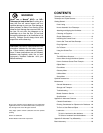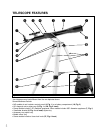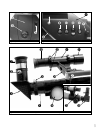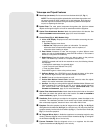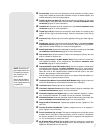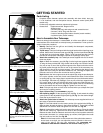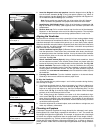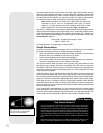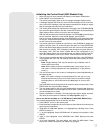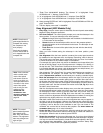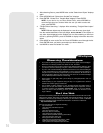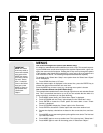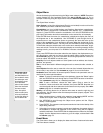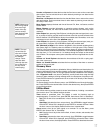
10
Low power eyepieces offer a wide field of view, bright, high-contrast images, and eye
relief during long observing sessions. To find an object with a telescope, always start
with a low power eyepiece (e.g., 25mm or 26mm eyepiece). When the object is locat-
ed and centered in the eyepiece, you may wish to switch to a higher power eyepiece
to enlarge the image as much as practical for prevailing seeing conditions.
NOTE: Seeing conditions vary widely from night-to-night and site-to-site.
Turbulence in the air, even on an apparently clear night, can distort
images. If an image appears fuzzy and ill-defined, back off to a lower
power eyepiece for a more well-resolved image (
Figs. 11a and 11b).
The power, or magnification of a telescope is determined by the focal length of the tel-
escope and the focal length of the eyepiece being used. To calculate eyepiece power,
divide the telescope's focal length by the eyepiece's focal length.
E.g., a 25mm eye-
piece is used with a NGC60 telescope. The focal length of the NGC60 is 700mm (see
SPECIFICATIONS, page 21).
Focal length ÷ Eyepiece focal length = Power
700mm ÷ 25mm = 28
The eyepiece power, or magnification is therefore 28x.
Simple Observations
If you wish to observe a distant land object, such as a mountain top, you can observe
by merely pointing the telescope and looking through the eyepiece.
• Move your telescope to observe distant street signs, mountains, trees and other
structures. Use your viewfinder to help site-in on an object.
• Practice focusing objects with the focus knob (
10, Fig. 1).
• Once you get a feel for how your telescope moves and focuses, try to view some-
thing more challenging, like a bird or a distant moving train.
You can also observe stars and objects in the night sky using this method, but note
that objects begin to slowly drift across the eyepiece field. This motion is caused by
the rotation of the Earth. You'll find that you will need to reposition your telescope from
time to time to keep an object in the eyepiece field of view. This is especially true when
using high-power eyepieces.
Viewing terrestrial objects requires looking along the Earth's surface through heat
waves. These heat waves often cause loss of image quality. Lower power eyepieces,
such as 25mm or 26mm eyepieces, magnify these heat waves less than higher power
eyepieces. Therefore, lower power eyepieces provide a steadier, higher quality image.
If the image is fuzzy or ill-defined, reduce to a lower power eyepiece, where the heat
waves do not have such an effect on image quality. Observing in early morning hours,
before the ground has built up internal heat, produces better viewing conditions than
during late afternoon hours.
If you have an NGC model telescope, you can locate stars and other celestial objects
(over 1400 objects in all) using the control panel. In order to do so, you must initialize
the control panel, set the telescope in the home position, and align the telescope. The
control panel uses this information to determine the location of celestial objects.
Fig. 11a & 11b: Jupiter; examples of
the right amount of magnification
and too much magnification.
Too Much Power?
Can you ever have too much power? If the type of power you’re referring to is
eyepiece magnification, yes, you can! The most common mistake of the begin-
ning observer is to "overpower" a telescope by using high magnifications which
the telescope’s aperture and atmospheric conditions cannot reasonably support.
Keep in mind that a smaller, but bright and well-resolved image is far superior to
one that is larger, but dim and poorly resolved (see Figs. 11a and 11b). Powers
above 200X should be employed only under the steadiest atmospheric condi-
tions.
Most observers should have three or four additional eyepieces to achieve the full
range of reasonable magnifications. See OPTIONALACCESSORIES, page 19.
TIPS for Beginners




